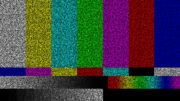For most of the 2000s, the term “plasma” was synonymous with “flat screen.” The TVs were bright, sharp and (at least for the time) flat and light. Their dominance was short-lived, however, as people became disappointed with screens that were far too susceptible to “burn-in.” After just a few hours on one channel, the TV developed a ghostly image of the channel’s logo, an image that never went away. That tended to sour people on plasma screens, even though the picture quality was far superior to the LCD panels at the time.
The first plasma?
The first plasma display I ever saw was in a museum exhibit dedicated to technology. It was in the early 1980s. Prototypes had been around for over a decade before then, and the military was using these screens in their top-end hardware. The first time I recall seeing a consumer product was about 1998, when a local video rental store had one as a display. They’d sell it to you, this 42″ standard-definition TV, for $25,000, which was a lot of money in those days. It was enough to buy a loaded Camry.
Plasma screens became more and more common in the next five years, and everyone wanted one. Not everyone could afford one, so they became a symbol of wealth and privilege. Look at any of the movies of the time. You’ll see them used in expensive apartments. Today those TVs don’t shout “rich person.” Back then, they did.
The downfall of plasma
Plasma screens had real problems with burn-in no matter what you did. It was a huge problem since most TV shows were still in the 4:3 format, meaning that you were going to get burnin on the left and right of the image pretty quickly. At the same time that people realized their fancy TVs were beginning to have problems. LCD TVs started to become less expensive. And that meant the death of plasma TVs.
It wasn’t long that plasma TVs that originally sold for $15,000 or more were sold for $1,000 or less. People just didn’t want them. With LCD TVs improving all the time, people looked past the somewhat less desirable picture and instead embraced the thinner, lighter LCDs that didn’t burn in.
So, it was with a somewhat heavy heart I told my friends that plasma TVs were going out of production in 2013. The internet saves everything, so you can read about the death of the technology as if it were happening now. Plasma screens are long gone now, of course. It took a few years, but newer TVs improved on the picture quality of the plasma. Even a $500 TV often looks better than a plasma screen did in its heyday. Are you interested in really getting the best quality? It doesn’t take more than $2,000 to get something really beautiful. And of course today’s TVs are available in sizes that plasmas never were. Naturally, because we have the pinnacle of technology in front of our faces, we ignore it. We often prefer to look at our phones instead. Pretty ironic, right?




